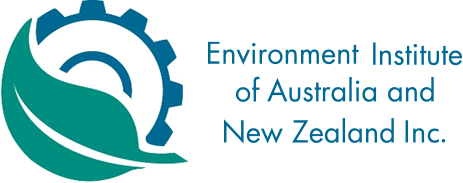-
Member Login
- Home
- About
- Institute Groups
- Australian Divisions
- New Zealand Chapter
- Special Interest Sections
- Communities of Practice
- Membership
- Events
- News & Publications
- Institute Programs
- Resources
- Jobs Board
- Contact Us
- Site Info
Dr Ian Boothroyd CenVP
Dr Ian Boothroyd CenVP
Abstract | Preloading for the future: Establishing mitigation success for intra and inter-generational expectations
Mitigation is a collective term used to describe several forms of managing the impacts of resource use. In New Zealand, the Resource Management Act (1991) requires ‘avoiding, remedying, or mitigating any adverse effects of activities on the environment’ (Section 5(2), but these terms are not defined. In practice, most forms of impact management have commonly been collectively termed ‘mitigation’ or represented in a comprehensive ‘mitigation package’. In some cases offsetting for biodiversity loss may be included in such a package, despite the question of its place in true mitigation. The importance of audit and monitoring mitigation is well established but much less attention is given to monitoring and measuring the success of mitigation. This is especially so in cases where the mitigation occurs across generations, such as the establishment of mature podocarp forest, which may take many decades to truly develop as a functional ecosystem. The challenge is to establish measures or indicators at the commencement of the mitigation that can be measured at some later date but still have effect as a measure of success; and to ensure that skills and technology endure to be capable of measurement. In this paper we present some examples where mitigation success indicators have been established and where they have been measured. In additions we provide some insight into what measures might be most suitable to ensure inter-generational success of mitigation.
Dr Ian Boothroyd CEnvP
 The authors are all ecologists who are employed by Boffa Miskell Ltd. Boffa Miskell is a leading New Zealand environmental planning and design consultancy. The authors have all worked on a large range of projects for local and international private and public sector clients in the areas of terrestrial, freshwater and marine ecology. A significant number of these projects have led changes in shaping New Zealand’s environment. Most of the authors are members of EIANZ, are CEnvP, and the presenter, Ian Boothroyd, is a former President of the NZ Chapter of EIANZ.
The authors are all ecologists who are employed by Boffa Miskell Ltd. Boffa Miskell is a leading New Zealand environmental planning and design consultancy. The authors have all worked on a large range of projects for local and international private and public sector clients in the areas of terrestrial, freshwater and marine ecology. A significant number of these projects have led changes in shaping New Zealand’s environment. Most of the authors are members of EIANZ, are CEnvP, and the presenter, Ian Boothroyd, is a former President of the NZ Chapter of EIANZ.
We acknowledge and value the rights and interests of Indigenous Peoples in the protection and management of environmental values through their involvement in decisions and processes, and the application of traditional Indigenous knowledge.

